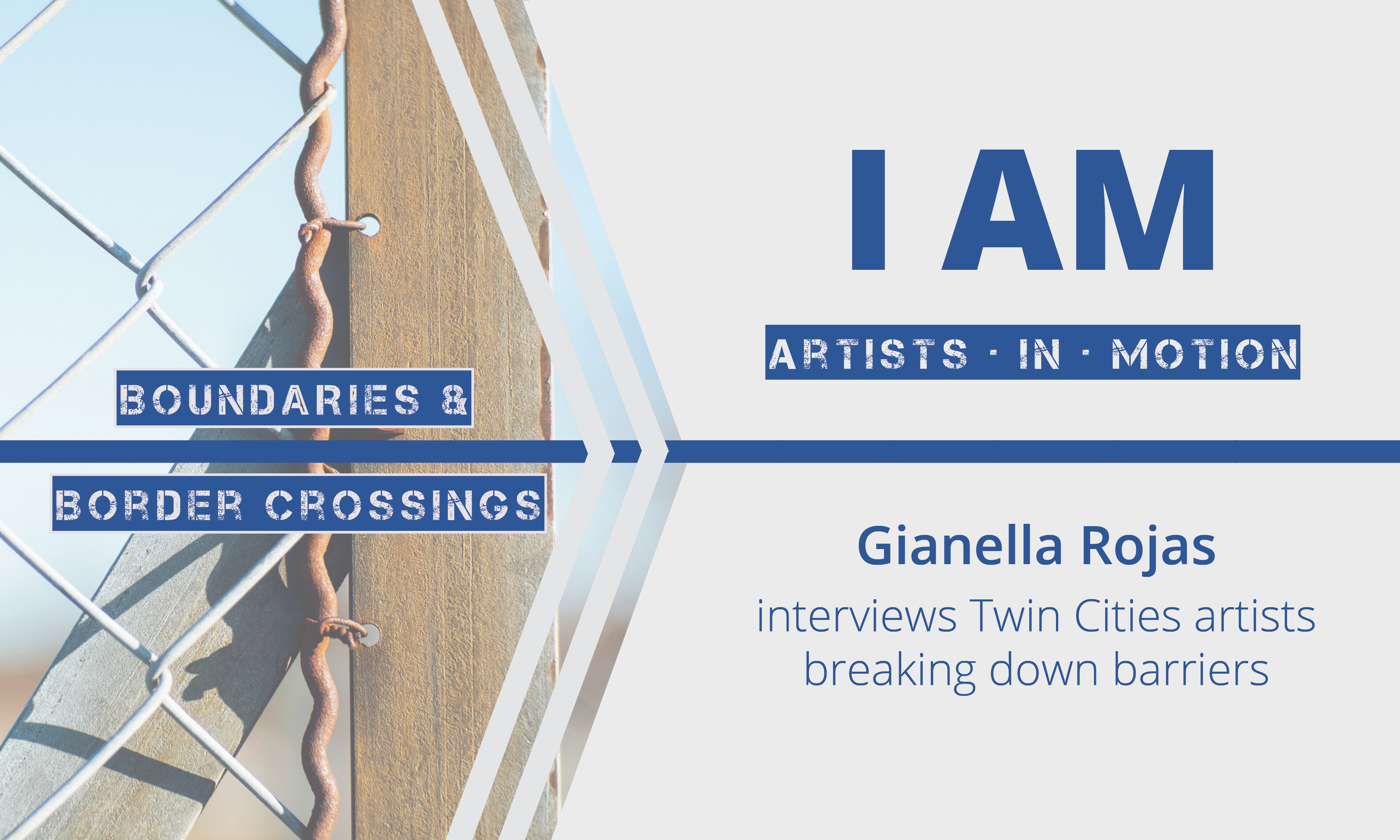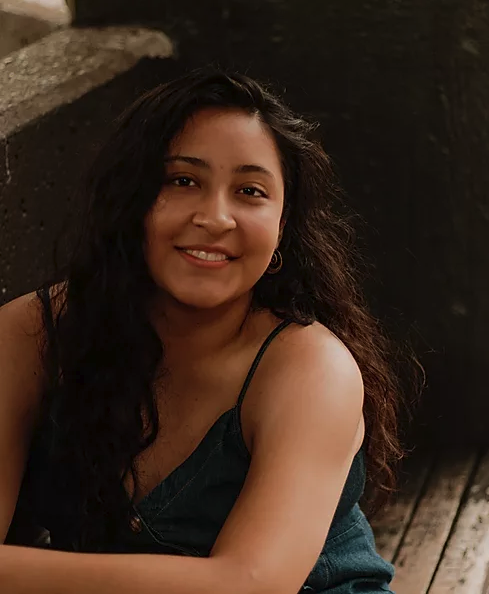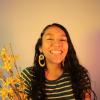Interview with Gabriela Sierra Bedon

I AM (Artist in Motion) is an interview series meant to spotlight indigenous artists and artists of color in the Twin Cities. I had the privilege of working at the Loft as the fall 2019 marketing and communications intern, and when they gave me the chance to work on a project of my choosing, I AM is the first thing I thought of.
The artists in this series were people I found truly inspiring. They incorporate art into their lives in many different ways and expressions, finding time whenever or wherever they can. They show how art can be a form of healing, understanding, and moving forward. I hope you take in their words and feel that for yourself.
________________________________________________________

Gabriela Sierra Bedon is an interdisciplinary artist working primarily with oil painting and ceramics. She was born in Ecuador and has lived in Minneapolis, Minnesota, for most of her life. The intricate nature of belonging to two places and cultures is something she holds close to her heart, and it plays an important role in her artwork and identity. Much of her inspiration comes from the spiritual connection to the natural world, including plants, clouds, and mountains. Her recent artwork has been featured in the Tower Literary and Art Magazine, Saber Magazine, and group exhibition Art and Influence at the Coffman Memorial Union Art Gallery. Gabriela is a junior at the University of Minnesota, Twin Cities, studying finance and art. You can find her artwork on Instagram at @munaycreations.
What modes or mode of storytelling do you use, and how is this approach a unique way of telling a story?
I just capture a moment in time in my paintings, and I think that it does not tell the full story. So I like having something written up. I’m very into research, and I like having research alongside my painting. I think that there’s many ways to view art. One of them is how the artist personally sees it, and that’s the story and reason behind them making art. Then there’s the actual viewer. I think it’s important for me to have that little bit of written information, but honestly it’s up to the viewer to interpret it however they like. Going back to the question, I like having a lot of meaning behind my paintings about my identity and culture, because that’s really important to me and what I try to live by.
What is your process in creating and portraying your art?
I don’t do a lot of prepping before I paint. A lot of it is just going for it. I rely a lot on my intuition, so whenever I feel like there’s something I want to get out or something I’ve been thinking about a lot, I just do it. I don’t sketch. I don’t prepare at all. I just go for it.
How does your artwork connect to your identity?
I’m a Latina; my family’s from Ecuador. I’ve found that it happens a lot unintentionally, I never go in trying to do it, but when I finish a piece, I’m like, “oh I see why I did that now.” It just sort of comes up. For a lot of my paintings, I just pick a subject I really love and I think that my identity shows through that. An example is I really love plants, and I tend to gravitate toward the more tropical ones, kind of like the ones that are in Ecuador or in the Amazon. It’s never intentional, but it just happens. One painting I did was of my great grandma, and she loved plants too, so in that way, I was able to connect to her. Painting her, and having her plants in the painting, that was special.
How does your artwork connect to your community or help you connect to your community?
Absolutely. I was born in Ecuador, but I moved here when I was really little. I feel like I have pieces of Ecuador that are mostly told to me through stories. So I like to paint things that make me research and think about where I’m from.
Why do you do what you do?
That’s a big question. I feel like there’s two parts to that. Here’s my art portion: art has always been in my life. My mom has always been the person to bring it to me. I went to an art middle school and high school. It’s always been consistent, it’s always been there. I never understood why I liked it or why I was doing it early on. Being in college made me think about that. My why is simply that it’s something that I just love and enjoy, and I don’t have to think about really hard. It’s such a useful tool for just partially destressing and letting things out. That’s a huge part, I think, of being a person of color. It’s really healthy for us to be able to express ourselves and maybe create discussions about our struggles and our whys for being in places that are not built for us. My second part goes along my second major—I’m also majoring in finance. I think my why for that is that I always loved math, so that's why I chose finance. The lack of Latinas in business. Most of my whys are existing in spaces that were not meant for us. Breaking that barrier. Just being there for younger generations that see that it’s okay to do that.
Do you share your paintings at all?
Yeah! I have an Instagram account (@munaycreations). So, that’s one way of sharing it. It’s always been there so I talk about it a lot with my friends.
I think it’s interesting that you paint and you’re in finance. Have they ever conflicted? Not that they shouldn’t coexist, but the way education is set up, I imagine, makes it difficult.
I don’t think that they ever conflicted. It’s mostly been making sure I’m balancing them, because they’re two things that I’ve always had in my life and that mostly just helped each other, having that balance throughout the semester. I’ve always just needed both.
Is it difficult to balance education and your career goals along with being an artist of color?
I think that for me it has not been hard to balance because I went to a middle and high school that was art focused. I can say there was a lack of funding for that, which is sad to see. But my parents have always been really supportive of it, so it hasn’t really been a struggle for me. It has been a struggle being in college and kind of figuring out how I want to fit in to that world or how much of my life I want to be in art. Part of that is just realizing who you are, and that’s just a whole topic. I think most people who are of color or mixed go through an identity crisis, so that is difficult to go through and be in school at the same time. There’s never a clear answer of how I fit into this world and how I think of myself.
